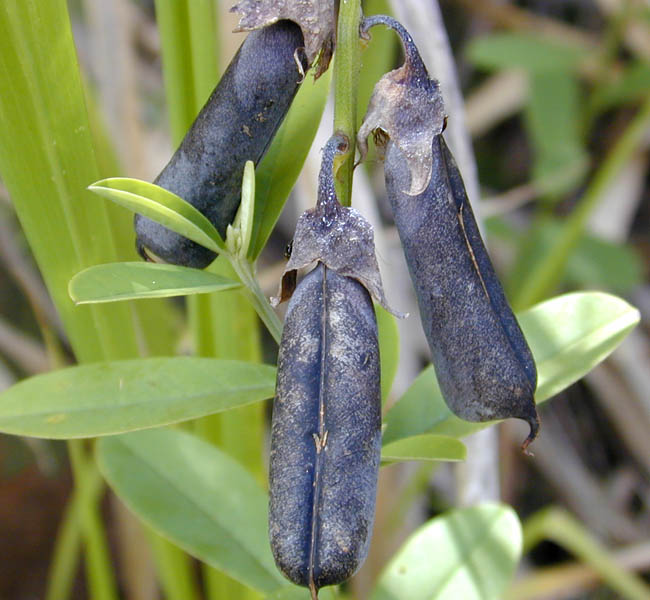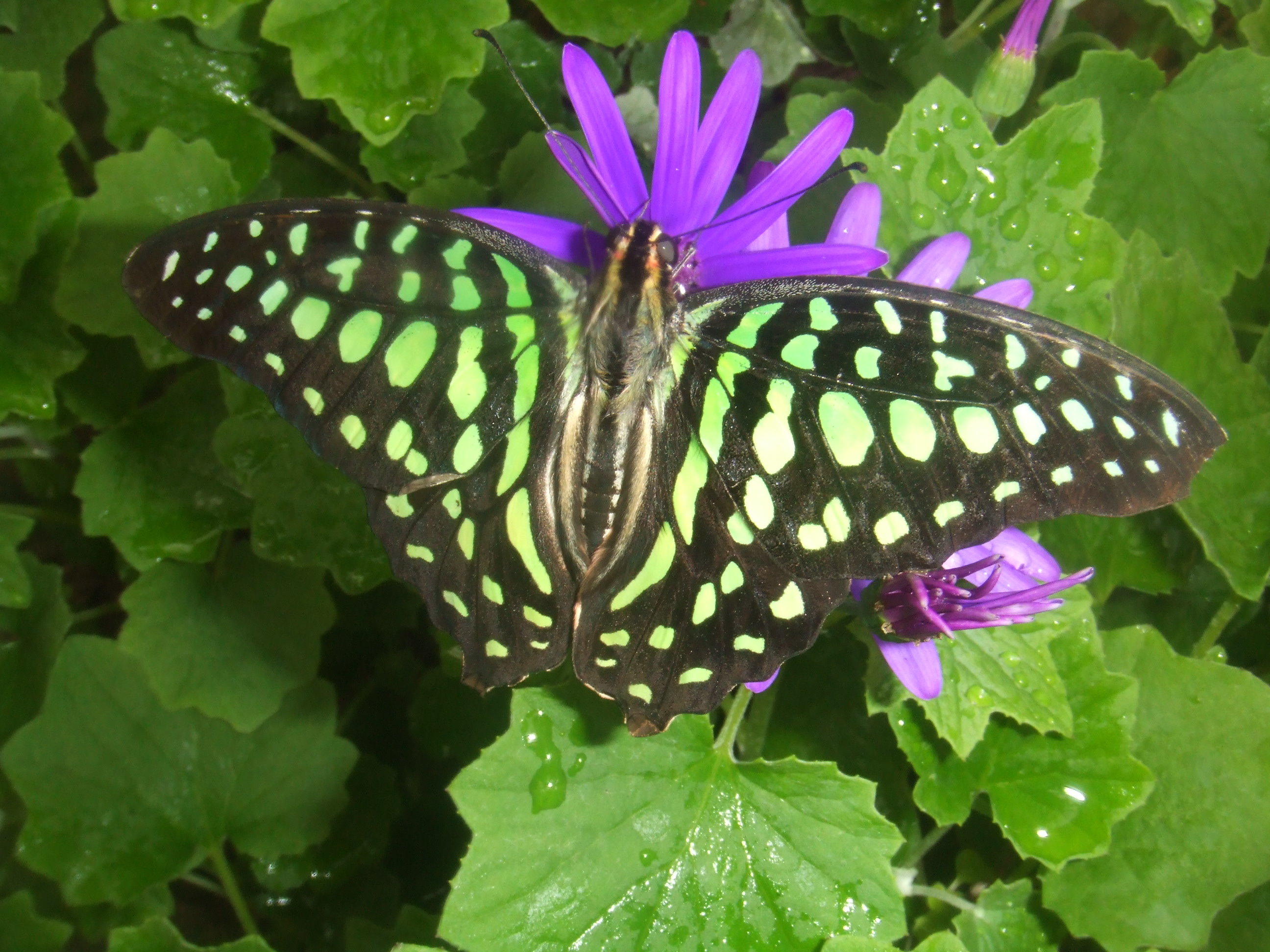|
Utetheisa
__NOTOC__ ''Utetheisa'' is a genus of tiger moths in the family Erebidae. The genus was first described by Jacob Hübner in 1819. Description Palpi porrect (extending forward), extending beyond the frons. Antennae ciliated. Forewings long and narrow, where the outer margin is short and somewhat erect. Vein 3 from before angle of cell. Veins 4 and 5 from angle, vein 6 from upper angle and vein 7 to 10 from a short areole. Hindwing with vein 5 from above angle of cell. Vein 6 and 7 from upper angle and vein 8 from middle of cell. Caterpillars of many ''Utetheisa'' species feed on ''Crotalaria'' (rattlebox), and hence the genus as a whole is often called rattlebox moths. The adults usually have bright aposematic coloration and contain toxic pyrrolizidine alkaloids, which are used as a chemical defense and are also incorporated into the sex pheromones of the males. Taxonomy The members of its subgenera ''Pitasila'', ''Atasca'', and ''Raanya'' were formerly included in '' Nyctemera ... [...More Info...] [...Related Items...] OR: [Wikipedia] [Google] [Baidu] |
Utetheisa ByRivuGayen
__NOTOC__ ''Utetheisa'' is a genus of tiger moths in the family Erebidae. The genus was first described by Jacob Hübner in 1819. Description Palpi porrect (extending forward), extending beyond the frons. Antennae ciliated. Forewings long and narrow, where the outer margin is short and somewhat erect. Vein 3 from before angle of cell. Veins 4 and 5 from angle, vein 6 from upper angle and vein 7 to 10 from a short areole. Hindwing with vein 5 from above angle of cell. Vein 6 and 7 from upper angle and vein 8 from middle of cell. Caterpillars of many ''Utetheisa'' species feed on ''Crotalaria'' (rattlebox), and hence the genus as a whole is often called rattlebox moths. The adults usually have bright aposematic coloration and contain toxic pyrrolizidine alkaloids, which are used as a chemical defense and are also incorporated into the sex pheromones of the males. Taxonomy The members of its subgenera ''Pitasila'', ''Atasca'', and ''Raanya'' were formerly included in '' Nyctemera ... [...More Info...] [...Related Items...] OR: [Wikipedia] [Google] [Baidu] |
Phalaena Ornatrix
''Utetheisa ornatrix'', also called the bella moth, ornate moth or rattlebox moth is a moth of the subfamily Arctiinae. It is aposematically colored ranging from pink, red, orange and yellow to white coloration with black markings arranged in varying patterns on its wings. It has a wingspan of 33–46 mm. Moths reside in temperate midwestern and eastern North America as well as throughout Mexico and other parts of Central America. Unlike most moths, the bella moth is diurnal. Formerly, the bella moth or beautiful utetheisa of temperate eastern North America was separated as ''Utetheisa bella''. Now it is united with the bella moth in ''Utetheisa ornatrix''. The larvae usually feed on ''Crotalaria'' species, which contain poisonous alkaloid compounds that render them unpalatable to most predators. Larvae may prey on other bella moth larvae in order to compensate for any alkaloid deficiency. The bella moth also demonstrates complex mating strategies and is thus an excellent ... [...More Info...] [...Related Items...] OR: [Wikipedia] [Google] [Baidu] |
Utetheisa Elata
''Utetheisa elata'' is a moth in the family Erebidae. It was described by Johan Christian Fabricius in 1798. It is found in Angola, South Africa and Tanzania, as well as on the Comoros, Réunion, Madagascar, Mauritius and the Seychelles. The larvae have been recorded feeding on '' Tournefortia argentea'', ''Heliotropium amplexicaule'', ''Trichodesma zeylanicum'', ''Heliotropium indicum ''Heliotropium indicum'', commonly known as Indian heliotrope, Indian turnsole is an annual, hirsute plant that is a common weed in waste places and settled areas. It is native to Asia. It is widely used in native medicine in Tamil Nadu, India. ...'', '' Tournefortia sarmentosa'', '' Crotalaria juncea'' and '' Crotalaria striata''. Subspecies *''Utetheisa elata elata'' *''Utetheisa elata fatua'' (Heyn, 1906) *''Utetheisa elata fatela'' Jordan, 1939 References * Moths described in 1798 elata {{Callimorphina-stub ... [...More Info...] [...Related Items...] OR: [Wikipedia] [Google] [Baidu] |
Utetheisa Connerorum
''Utetheisa connerorum'' is a moth of the family Erebidae. It is endemic to the Galapagos archipelago, where it is the most widespread of all ''Utetheisa'' species. It has been found on Baltra, Fernandina, Floreana, Genovesa, Isabela, Marchena, Pinta, San Cristóbal, Santa Cruz, Santa Fé, and Santiago. The length of the forewings is 12–15 mm for males and 12–14 mm for females. The caterpillars feed on '' Tournefortia rufo-sericea'', '' Tournefortia psilostachya'', '' Tournefortia pubescens'' and ''Heliotropium curassavicum''. The larva is solitary and draws leaves together, fastening their edges, for concealment. Larval specimens have been collected from May to November. The food plants contain pyrrolizidine alkaloids, which are also stored in the adult moths. These pyrrolizidine alkaloids make the moths unpalatable to the orb-weaving spiders of '' Eustela vegeta'', which release moths that are given to them from their webs. Lava lizards (''Microlophus pacificus' ... [...More Info...] [...Related Items...] OR: [Wikipedia] [Google] [Baidu] |
Utetheisa Cruentata
''Utetheisa cruentata'' is a moth of the family Erebidae first described by Arthur Gardiner Butler in 1881. It is found on Mauritius Mauritius ( ; french: Maurice, link=no ; mfe, label=Mauritian Creole, Moris ), officially the Republic of Mauritius, is an island nation in the Indian Ocean about off the southeast coast of the African continent, east of Madagascar. It incl ... in the Indian Ocean. The larvae feed on '' Tournefortia argentea''.Goodger & Watson. (1995). ''The Afrotropical Tiger-Moths'': 27 References *Butler, A. G. (1881). ''Illustrations of Typical Specimens of Lepidoptera Heterocera in the Collection of the British Museum''. 5:i–xii, 1–74; pls. 78–100. External links * cruentata Moths of Mauritius Endemic fauna of Mauritius Moths described in 1881 {{Callimorphina-stub ... [...More Info...] [...Related Items...] OR: [Wikipedia] [Google] [Baidu] |
Utetheisa Sumatrana
''Utetheisa sumatrana'' is a moth of the family Erebidae first described by Walter Rothschild in 1910. It is found on north-eastern Sumatra Sumatra is one of the Sunda Islands of western Indonesia. It is the largest island that is fully within Indonesian territory, as well as the sixth-largest island in the world at 473,481 km2 (182,812 mi.2), not including adjacent i .... References Moths described in 1910 sumatrana Fauna of Sumatra {{Callimorphina-stub ... [...More Info...] [...Related Items...] OR: [Wikipedia] [Google] [Baidu] |
Utetheisa Galapagensis
''Utetheisa galapagensis'' is a moth of the family Erebidae The Erebidae are a family of moths in the superfamily Noctuoidea. The family is among the largest families of moths by species count and contains a wide variety of well-known macromoth groups. The family includes the underwings ('' Catocala'') .... It is known only from the Galápagos island of San Cristóbal. It is probably endemic to the archipelago. Larvae have been reared on '' Tournefortia pubescens'', but probably also feed on other '' Tournefortia'' species. External linksTwo new species of Utetheisa Hübner (Lepidoptera, Noctuidae, Arctiinae) from the Galapagos Islands, Ecuador galapagensis Endemic fauna of the Galápagos Islands Moths of South America Moths described in 1860 {{Callimorphina-stub ... [...More Info...] [...Related Items...] OR: [Wikipedia] [Google] [Baidu] |
Utetheisa Diva
''Utetheisa diva'' is a moth in the family Erebidae. It was described by Paul Mabille in 1879. It is found on Réunion, Madagascar and the Seychelles Seychelles (, ; ), officially the Republic of Seychelles (french: link=no, République des Seychelles; Creole: ''La Repiblik Sesel''), is an archipelagic state consisting of 115 islands in the Indian Ocean. Its capital and largest city, V .... References Moths described in 1879 diva {{Callimorphina-stub ... [...More Info...] [...Related Items...] OR: [Wikipedia] [Google] [Baidu] |
Utetheisa Devriesi
''Utetheisa devriesi'' is a moth in the family Erebidae. It was described by Alan H. Hayes in 1975. It is endemic to the Galápagos Islands The Galápagos Islands (Spanish: , , ) are an archipelago of volcanic islands. They are distributed on each side of the equator in the Pacific Ocean, surrounding the centre of the Western Hemisphere, and are part of the Republic of Ecuador .... References * Moths described in 1975 devriesi {{Callimorphina-stub ... [...More Info...] [...Related Items...] OR: [Wikipedia] [Google] [Baidu] |
Lepidoptera In The 10th Edition Of Systema Naturae
In the 10th edition of ''Systema Naturae'', Carl Linnaeus classified the arthropods, including insects, arachnids and crustaceans, among his class "Insecta". Butterflies and moths were brought together under the name Lepidoptera. Linnaeus divided the group into three genera – ''Papilio'', ''Sphinx'' and ''Phalaena''. The first two, together with the seven subdivisions of the third, are now used as the basis for nine superfamily names: Papilionoidea, Sphingoidea, Bombycoidea, Noctuoidea, Geometroidea, Tortricoidea, Pyraloidea, Tineoidea and Alucitoidea. Themes When naming the nearly 200 species of butterflies known to him at the time, Linnaeus used names from classical mythology as specific names. These were thematically arranged into six groups, and were drawn from classical sources including the ''Fabulae'' of Gaius Julius Hyginus and Pliny the Elder's ''Naturalis Historia''. The first such group was the ''Equites'', or knights, which were divided into the ''Equites Trojani'' ... [...More Info...] [...Related Items...] OR: [Wikipedia] [Google] [Baidu] |
Utetheisa Antennata
''Utetheisa antennata'' is a moth in the family Erebidae. It was described by Charles Swinhoe in 1893. It is found on the Nicobar Islands The Nicobar Islands are an archipelagic island chain in the eastern Indian Ocean. They are located in Southeast Asia, northwest of Aceh on Sumatra, and separated from Thailand to the east by the Andaman Sea. Located southeast of the Indian s ... in the Indian Ocean. References * Moths described in 1893 antennata {{Callimorphina-stub ... [...More Info...] [...Related Items...] OR: [Wikipedia] [Google] [Baidu] |
Utetheisa Amhara
''Utetheisa amhara'' is a moth in the family Erebidae. It was described by Karl Jordan in 1939. It is found in Eritrea, Ethiopia, Kenya, Saudi Arabia, Somalia and the United Arab Emirates The United Arab Emirates (UAE; ar, اَلْإِمَارَات الْعَرَبِيَة الْمُتَحِدَة ), or simply the Emirates ( ar, الِْإمَارَات ), is a country in Western Asia (The Middle East). It is located at th .... References * Moths described in 1939 amhara {{Callimorphina-stub ... [...More Info...] [...Related Items...] OR: [Wikipedia] [Google] [Baidu] |



